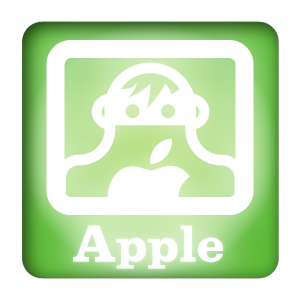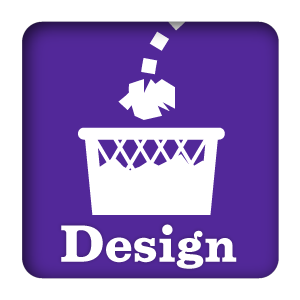This is a big event. By all indications, the biggest Apple has put on in years. Three major products are about to roll out: Apple TV, iPhone updates and the new iPad Pro. So I’m breaking up the usual “predictions” post into two parts. In this part, we’ll be talking about the most significant product, the introduction of a new platform: The Apple TV.
Previously on theBrainFever: The Apple TV: Problem and Solution
In this 2011 article, subjects of interface, setup and programming strategy were covered on a future refresh of the Apple TV. But that was four years ago. Now, the moment has finally arrived on September 9th. Or maybe in October. Possibly January. But it’s closer than ever!
What is the new Apple TV?
First of all, it’s not a set-top box. That’s just too horrible to think about. The least advanced piece of tech I own is my set-top box. I think I have a do-it-yourself crystal AM radio kit in my closet that’s higher tech. My “advanced” set top box makes a constant humming sound, sucks more power than reviving Frankenstein’s monster and is slow enough that mailing my channel changes to the home office might be more effective.
Sure. Apple can beat that tech, but that’s not exactly a high bar. This what we call a sector ready for disruption. Apple’s product can win against current DVRs easily. The TiVO is the closest thing to being competition, but their customer-preferred interface is getting old in the tooth and doesn’t work well in a streaming world.
I had been convinced that Apple would do a big screen TV. Yes, the margins are low, and they don’t turn over very fast. Still, I don’t think it’s in Apple’s tendencies to leave color calibration, interface, and the overall experience to anyone else but themselves. Do you want Apple’s TV interface to fight through a layer of “smart TV” interfaces to be seen? Plus, the Apple retail stores are the best place in the universe to show a great TV screen off.
Although there is no evidence or product leaks to support Apple making a TV with a screen… There’s no evidence the other way, either. So although I don’t consider a big screen Apple TV likely, I’m not writing it off quite yet.
Don’t Stop Dreaming, Starchild
What I do know is that the Apple TV is going to have a deeper, richer interface that anyone suspects. I wrote about a touch-panel concept I had for the Apple TV a few years ago, but based on the rumor mill, it sounds like we’ll have something that’s a cross between a wii-mote and a trackpad. The best interface for an Apple TV is to have a point-and-touch interface that essentially makes it a giant screen iPad.
The more like a touch-screen interface the remote can be, the more the Apple TV can do. Conventional iOS apps can be added to the Apple TV, and open the device up to the millions of iOS apps, including games. That would be a big deal, and you can already read a few dozen hundred overheated articles about how Apple is going to dethrone gaming consoles. We’ll see.
What else can we expect? Well, we’re getting a big, fat blatant clue from Apple to help us. In their invitation for the expected unveiling of the Apple TV, the invite is captioned “Hey Siri, give us a hint.” Those familiar with the “Hey Siri” feature know that this feature works as a call-out to your iOS device to activate Siri when the device is off but plugged in.
So why bring that up? Well, an Apple TV is plugged in. It could respond to a call-out request, much like an Amazon Echo. The Echo acts as a connected device that can reply to verbal queries. It can also control streaming music playback, and Apple sure could take advantage of that kind of feature with Beats 1 and Apple Music. The Echo also controls lights and other smart connected home devices – and Apple has been recently been pushing a HomeKit connected device standard. Quite a coincidence.
The Apple TV could not only be a TV box, but it could play & control music, control lights and other connected home devices as well as answer questions, schedule appointments and even reply to messages just like Siri already does. So I’ll wager that the new Apple TV will be light years ahead of the current hockey puck. And I also think the on-screen interface will be totally re-made to look like an iOS device.
Bored. What else is on?
While everyone’s been getting hot and bothered about the what/when questions about the supposed Apple TV, the most important question is what you pipe into an Apple TV. Content will make or break the product.
TV content breaks down into three categories: “Scripted,” “Reality” and “Live Events.” All TV programs fall into these categories. Viewing habits fall into two categories: “On Demand” and “Streaming.” That is to say, a la carte or live broadcasts. Apple and iTunes already addresses the needs of scripted show viewers who watch on demand. They also cover some live events with a select number of live sports channels on Apple TV, which are expanding. That covers a lot of what TV is. But Apple doesn’t have a solution for folks who simply watch TV casually. By casually, I mean folks who turn on the TV and just let it go, with no particular show in mind – streaming viewers.
One could argue that the audience of people who subscribe to cable and watch “whatever is on” are poor customers, and not worth pursuing. These are not not Apple customers, and are the least likely to purchase an Apple TV in the first place.
If this were the case, then there would be no need for a new Apple TV product. Apple already delivers a la carte programming of the most popular scripted shows and movies. Since the evidence clearly points to Apple investing time, energy and money into a TV product, it’s clear that they aren’t satisfied with what they currently offer.
That seems to be the rub. Apple already offers a very compelling TV substitute in the current Apple TV. But neither the devices nor the iTunes shows are selling like they should. To address that, Apple is already introducing more live options, and now it needs to get that last element of programming, casual viewing, before it can position itself as the cut-the-cord option it needs to be.
The difference Apple can make with a TV product is that it can provide something no else can – a true RS-DVR. That’s industry speak for “remote storage digital video recorder.”
Oh, God, this about the cloud again, isn’t it?
In 2009, the US Supreme court declined to hear a case brought by CableVision on storing TV shows on their local servers on behalf of their customers who wanted to recall the shows for later viewing. That made it legal for providers to store their customer’s requested shows, acting like a virtual DVR. At the time, it was thought that this would herald a new era of remotely stored TV shows for on-demand viewing. It didn’t. For whatever reason, the cable industry dragged on this potential blockbuster feature and has never brought it to the US market on a national scale.
Apple can not only provide this service, but they can go one step better. It is rumored that Apple is using their negotiating leverage with the larger TV broadcast networks to include the local affiliates’ programming in their streaming packages. If Apple is successful, they can have all national and local programs available on an Apple TV streaming and on-demand.
With broadcast networks able to provide their programs and bring along the affiliates, Apple can effectively replace broadcast TV.
Let’s not get too far ahead of ourselves. The point is that Apple is already in a good position to make the Apple TV another great product, and provide the content and experience that people have come to expect. As I wrote in my first Apple TV article, you cannot underestimate how dearly people want to cut the cord and kill their Cable TV dependance. If Apple is able to step in and provide that option, this will be a big seller.
But, isn’t what we just described simply a new way to get stiffed by cable? Isn’t this just the same channel bundling that we’ve come to hate?
Why are you asking me? You wrote this.
Apple has a few ways to attack this. One, they can just offer a no-choice subscription, and you get everything Apple throws at you for one price. This is the solution they offer in Apple Music. However, this opens them up to the same “carriage” negotiations that have gotten ugly when the channels hike prices and cable companies drop popular channels. It also leads to being force-fed junk channels you never watch but pay for. My hope is that Apple won’t want that kind of poor customer experience.
Another option is to go a la carte on channels. You just buy the channels you want, and the rest you don’t pay for. You subscribe to the channels individually for a low monthly price. Sounds good, but the channels will fight this with their dying breath. They like lock-in bundles, and believe it’s essential to their business. Apple’s tendency towards a meritocracy won’t sit well with TV executives.
The third option would be to innovate a bit, and come up with something new. It’s worth remembering that Apple likes to think in global terms, and being too focussed on the US TV market might work against their normal thinking. They may just bundle channels according to languages and interests. English, Spanish, Chinese, etc. and Drama, Sports, News, etc.
Epilogue
However, this content question is rumored to be something Apple will introduce at a later date. For now. Apple will likely focus on the new interface, the inclusion of iOS apps (and/or forthcoming app development) and the new home control features.
It’s a device which will tie in to many Apple services, implement new ones and be an anchor for the future of Apple in the home. This’ll be a platform that will define Apple’s next generation of products, as important to the future as the iPhone or the Mac itself has been. Much like the iPhone isn’t about being a phone and the Watch isn’t about telling time, the Apple TV may be less about TV and more about people using computing power in an entirely new way. Without even thinking about it.










